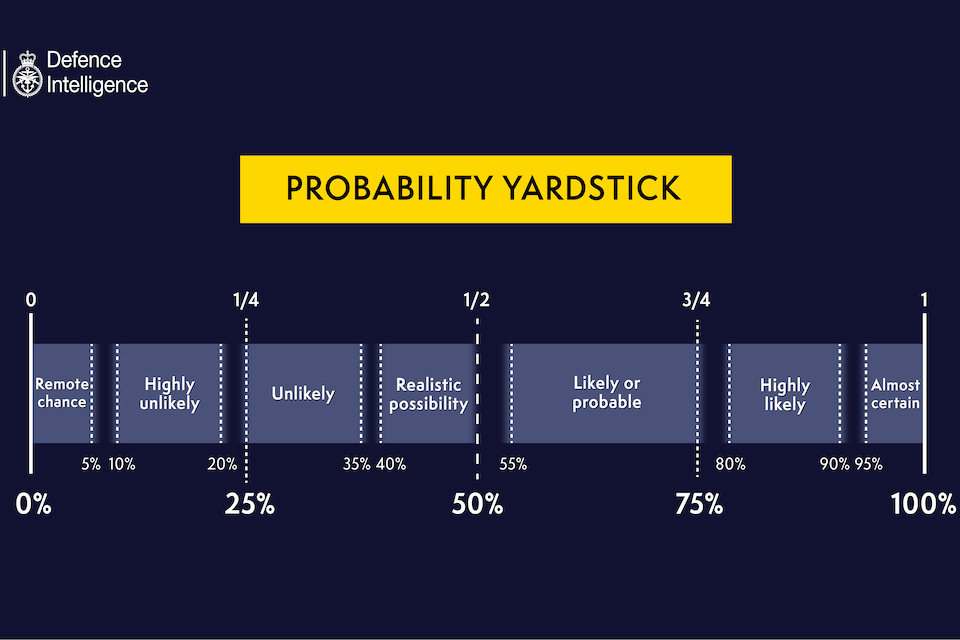Have you ever wondered why Defence Intelligence uses terms like “unlikely” or “realistic possibility” when we assess Russia’s war in Ukraine?

Defence Intelligence logo
Defence Intelligence tweeted President Putin’s invasion plan the week before Russian forces entered Ukraine. Defence Intelligence continues to publish regular intelligence assessments on Twitter to help explain the conflict. It uses a specific language to communicate probability within these assessments.
Intelligence assessments aim to explain something that has happened (insight), or to predict what might happen next (foresight). Intelligence analysts piece together assessments from an incomplete number of jigsaw pieces. Analysts therefore use a shared vocabulary of likelihood that aids clarity for both analysts and their readers, whilst communicating the probability that explanation or prediction is correct.
A common yardstick to convey the language of uncertainty was developed by Defence Intelligence in the early 2000s, and an updated form is now in use across the UK intelligence assessment community. This ensures that government officials understand how likely it is that an event will or did occur.
The yardstick splits the probability scale into seven distinct numerical ranges. Terms are assigned to each probability range. The yardstick was informed by academic research and corresponds to the average reader’s understanding of each term. The scale is not continuous to avoid a false impression of accuracy.




No comments:
Post a Comment